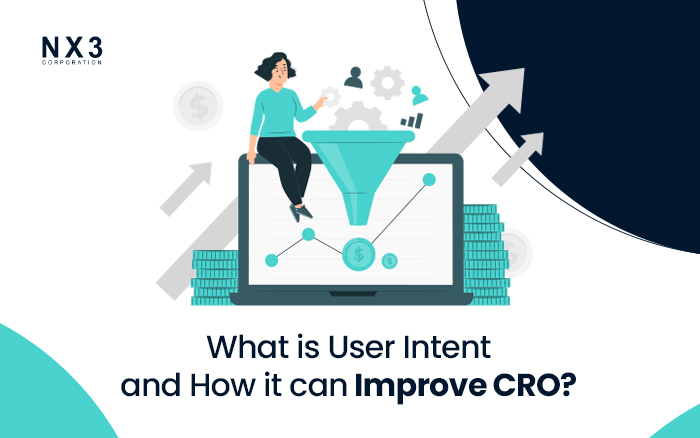Yes, that’s right. User intention, in simple words, is the purpose of any user’s search. By automatically interpreting user intent, google displays the results that are aligned with it. If you want to ensure that your content appears in the Google snippets and makes your reader click and stay longer, a solid user intent grasp is what you need. So let’s dig in.
Table of Contents
What is User Intent?
When you open your browser and start typing in the search bar, from that point till the point when you land on your target website or find what you are looking for, your actions are guided thoroughly by one thing; intention. You could be searching for something on the internet or you could be looking for the product that you have been meaning to buy. In any case, you are performing this research over the internet because you have certain intentions. This is what user intention is in simple words.
In other words, user intention is not just about the keywords or phrases that people use to conduct their query, it is rather about the reason that lies behind their query. User intention is what the user is looking for when he or she turns to a search engine. Knowing user intention can help you a lot in your Search Engine Optimization (SEO) and Conversion Rate Optimization (CRO).
Long gone are the days when SEO was only about keywords and backlinks, now it has become much more. Now, SEO experts also focus on what exactly the intent is behind user research. It dives into the mindsets and reasons of the people that drive them towards making certain research.
Types of User Intent
Since you could have many different intentions for surfing an internet browser, user intent has multiple types. Let’s look at them:
1) Transactional Intention:
This type of intention is nothing new to you, especially with the rise of online shopping during the Covid-19 lockdown. You must have found yourself opening your phone and giving to your favorite eCommerce website or app to buy something. The intention at work here is the transactional intention which literally means intending to buy something.
2) Navigational Intent:
As the name suggests, navigational intent comes into play when a user is trying to find something on the internet. For example, if you are looking for a certain website that your friends told you about in the past, it is navigational intent. If you are trying to look for New York Times or any other specific website, it is navigation intent. In short, when you search for a specific website with the intention of looking for it, it is Navigational Intent.
3) Informational Intent:
Information intent is purely about your intention of learning something new. So if you are searching for new trends in fashion or new inventions in Technology, the intention at play here is Informational Intent.
4) Commercial Intent:
This intent type is a hybrid of both informational and transactional intents which means your audience uses this intent when they are researching a product and deciding if they want to purchase it or not.
Importance of User Intent
With every update, Google is making its SERP criteria more authentic and a bit tricky. Where before SEO experts used to focus heavily on competitive keywords while not paying much attention to the content itself, now following this practice is not so fruitful anymore. The reason is loud and clear, user intent.
Google is shifting its focus towards what a user intends to do when they make any type of query online so that when they visit your website, they don’t immediately feel the urge to go back. Crafting your content around user intention will make your site visitors stay. This way you can easily increase the conversion rate.
The one area that is reaping benefits out of user intent the most is Pay Per Click advertising. You would certainly not want to pay for those visitors who are not interested in seeing your advertising or acting on it. By using the right keywords and content based on user intent, you will only attract those people who are genuinely interested in your ad and all the non-interested outliers will be warded off.
From increasing your conversion rate to impacting your keyword research positively, user intent plays a huge role in making your content and site relevant for users or visitors to stay longer than the usual stay time of 10 to 20 seconds.
How Can you use User Intent to improve CRO?
You can leverage search intent or user intent for CRO which will help you realize your goal of attracting wide traffic and converting them. You will first have to start with diving deeper into what your customer thinks like to understand their intentions. Optimize content and incorporate compelling Call to Actions. Create short paragraphs, enhance keyword optimization, include infographics, leverage internal linking, and analyze your competitor’s strategies.
What user intent should you target?
As a general rule of thumb, those who are running PPC campaigns tend to target transactional user intent while SEO strategies tend to focus more on informational intent. The reason for this practice is PPC ads are typically about a product to sell or a solution to offer. On the other hand, SEO is more staunchly followed in blogs. Therefore, PPC campaigns target more transaction intent to know what will intince users towards their ads to the extent that they will make the purchase. And SEO strategies focus on informational intent because users read blogs only when they have to find out some information about a certain topic.
Following the same pursuit, other user intent types can be followed by analyzing what they are doing and what it is that you are marketing.
Conclusion
Knowing about user intent is essential if you want your website to rank high in Google. The Informational intent gives users the information they are looking while transactional and navigational intents

